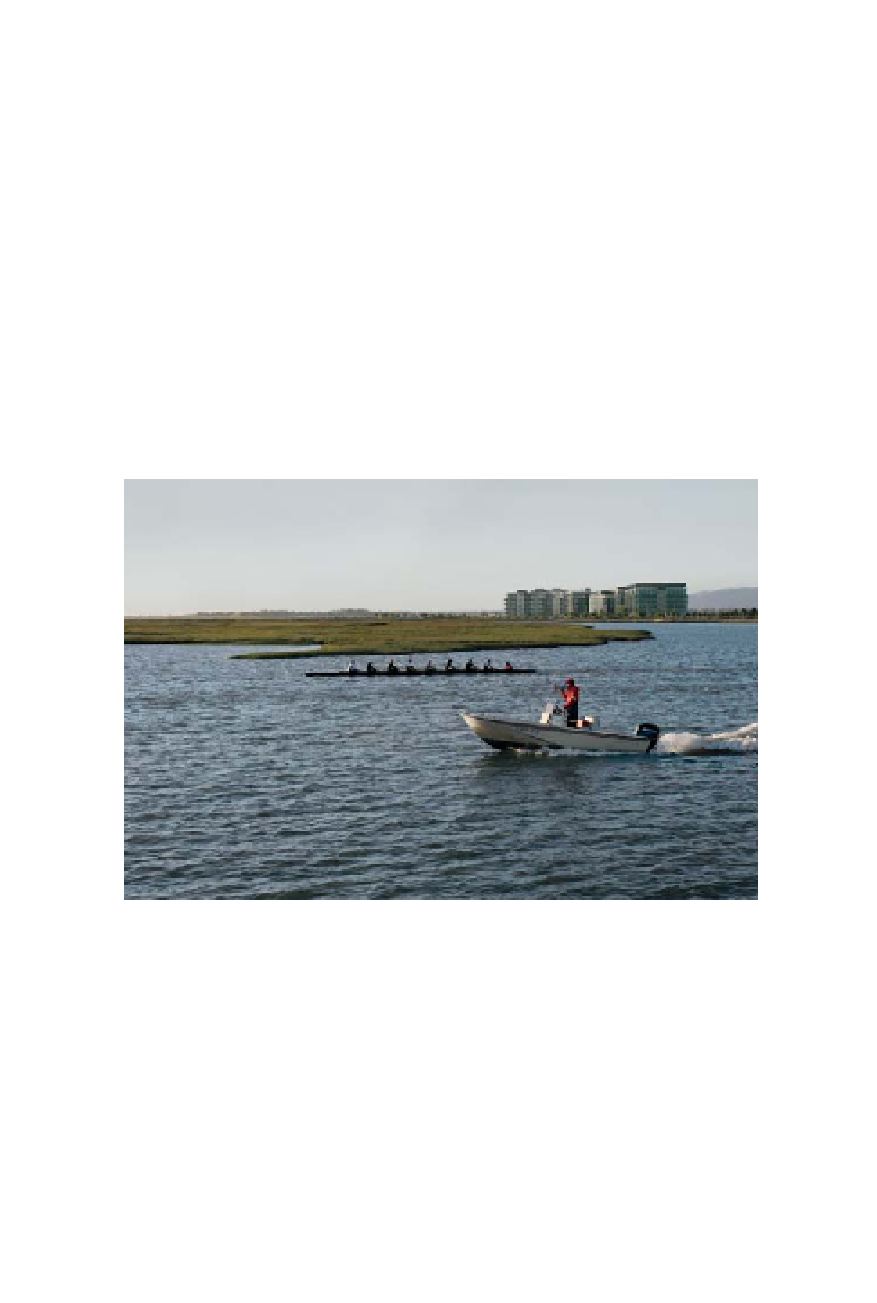Biology Reference
In-Depth Information
LIVING ON ROCK
, or at least on rebar-reinforced concrete, is second nature
to anyone who's felt the earth roll under their feet in a California quake.
Those who lived in the Sacramento Valley through all the floods of the
twentieth century learned to retreat to higher ground or behind a levee.
Those who live up coastal canyons and foothills know the fear of fire—
which once renewed California's grasslands and forests—burning through
their communities with frightening heat and speed.
“What is this strange quality in humans that makes them court disas-
ter? They build their homes on floodplains and riverbanks, cliff edges,
slipping hillsides, brush-choked canyons and on the slopes of volca-
noes. . . . All over this planet we [defy] the eternal forces of nature. Then
we try to coerce those forces into doing our bidding,” wrote columnist
Arthur Hoppe in the
San Francisco Chronicle
years ago.
Shoreline edifices such as this South Bay development may soon be susceptible
to storm surges and sea level rise. (Francis Parchaso)
Though Californians may be accustomed to living with quakes, fires,
and floods, climate change is certain to challenge their tolerance. It may
not trigger shifts in the earth's crust, but it will certainly intensify tides,
floods, and fires within the next few decades. According to the U.S. Geo-
logical Survey (USGS), the current average of three days of temperatures
over 120°F in Sacramento each year may well become three weeks by 2020;
areas once at risk of flooding once a century may instead flood every year.
As sea level rise accelerates, the bay itself will get much bigger, but this
isn't necessarily anything new, according to climate change director Steve
Goldbeck of the San Francisco Bay Conservation and Development Com-
mission (BCDC). “If you take the long view, the bay was once a river

